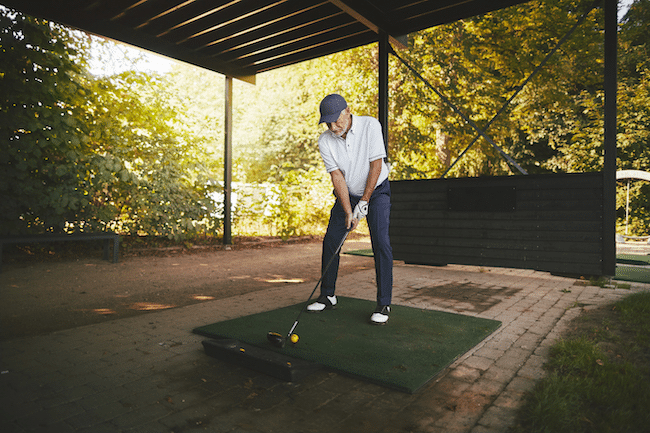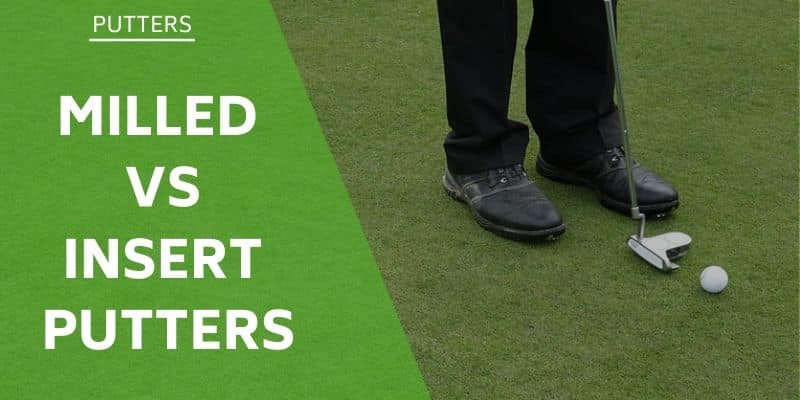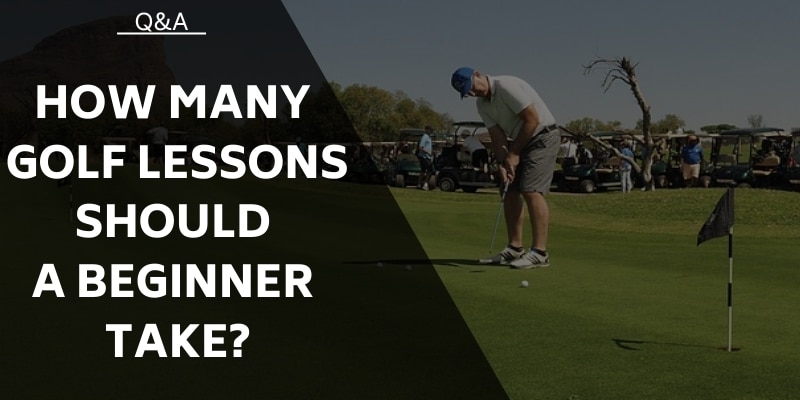Although some of us can hit the ball pretty long, almost all of us feel that we could get extra distance with our drives. It’s only natural, and that’s what makes us such passionate golfers!
What is the average golf driving distance by age? Most golfers drive between 200 – 249 yards; within that range, 220-229 is the most common. Only 15% of golfers hit over 250 yards, and the Tour average is 296 yards on the high end.
While it should come as no surprise that the average yardage decreases with increased age, this doesn’t necessarily mean that younger players are better. Just look at the tour!
In this post, we deep dive into the question, how far does the average golfer drive the ball? Specifically, you’ll learn average golf driving distance trends among by sex, age, distance, and handicaps. The results may surprise you…
Data Sources
Before we discuss what the data shows, we first want to give credit where credit is due. This post was made possible by Arccos, Shot Scope, and My Golf Distance.
Both Arccos and Shot Scope have a comprehensive database of useful shot data. On the other hand, My Golf Distance undertook the lengthy process of collating shot data from various sources.
Average Golf Driving Distance By Age

Before discussing trends regarding specific groups of players, it’s first important to establish a baseline of driver distances for all golfers.
As you can see from the above chart, the largest group of players reside in the 220-229 yard category at 13.5%. The next largest group is the 210-219 yard group at 13.2%.
Regarding the overall distribution, only five groups exceed 10%, and these are all situated around the center. In fact, these five groups spanning 200 to 249 yards account for just over 60% of all players.
If we push further into the elite categories, we see that 15.5% of players can hit 250 yards or longer. For context, 257.7 yards is the average of the LPGA Tour. However, if we slide right over to the top end, we see that the number of players who can hit 300 yards or longer shrinks to less than 0.1%. This is higher than the 296.4 average on the PGA Tour.
Therefore we can deduce that a driving distance of 300 yards is exceedingly rare, and you are highly likely to be around 200-249 yards as a keen amateur. And if you hit over 219 yards, you are above average.
Read More: How Far Do Pro Golfers Drive?
Driving Distance & Handicap by Age

This graph shows some interesting relationships. What is immediately apparent is that the average distance falls with age. This distance loss also becomes more amplified in your later years. For example, from 20-29 to 30-39, you lose just 2 yards on average.
However, from 60-69 to 70+, you lose 16 yards.
Yet, while younger players can strike the ball further than older players, this does not necessarily mean that they are better golfers. While it is true that 20-29-year-olds have a respectable 13.7 handicap, this is not the highest among the dataset. That instead goes to 50-59-year-olds — despite the fact they hit their drives 19 yards less on average.
This suggests that older players have more versatile games, and that experience ultimately trumps length.
Another interesting trend is that we see the same average handicap several times. Those who are 40-49 years old have a 13.7 average, like 20-29-year-olds. Also, 60-69-year-olds have the same 14.7 average as 30-39-year-olds. Now that one is surprising!
Men’s Driving Distance by Age

The average driver distance for men by age from My Golf Distance tells much the same story as the Shot Scope data we just looked at. Driver distance peaks at around 25 years old and steadily declines thereafter. The only difference we would have expected is more of a curved relationship rather than a linear one. That being said, we do see a steeper distance decline from the age of 70, just like for Shot Scope’s data.
Furthermore, as you would expect, average good shots and average carry distance closely follow the average distance trend. The only noteworthy point to mention here is that average good golf shots decline at a slightly higher rate with age than average distance.
Read More: Golf Club Distances
Women’s Driving Distance by Age

We see a similar reduction in the distance with age for female golfers as we do with men. Women also achieve peak distance at around 25, however, their decline is not quite as pronounced. Where the average distance for women falls from around 156 yards to 109 from 25 to 85 years old, men fall from 241 yards to 168 during the same period. That means men lose 26 more yards in total.
Interestingly, we see the same trend in women as for men at around 70. The loss of distance increases ever so slightly. What’s more, the separation between average good shots and average distance also becomes closer the older female golfers get.
Driving Distance by Handicap

The handicap relative to driving distance data has no surprises. It definitively shows that low handicappers hit the ball longer than high handicappers.
We can see handicappers of <9 hitting the ball on average 243 yards. When we compare this with the average 20-29 year old’s distance, we see that is the exact same at 243 yards. However, the average handicap of this age group is 13.7, much higher than <9. This shows that distance rather than age is more likely to result in a low handicap.
Read More: Percentage of Golfers to Break 100
Want More Distance? Check Out One Of Our Favorite Courses
Get More Distance
Tips to Improve Your Driving Distance

Now that you know the various stats relating to driver distance, it’s time to improve your own. You don’t want to just be average now, do you? Here are some simple and actionable steps you can take to help make your drive longer the next time you hit the course.
1. Faster Backswing
Many players focus on the strike of the ball itself and neglect their backswing. However, refining this portion of the motion can really help add distance.
A faster backswing causes your swing to become longer. This is because you turn your shoulders and hips more than you normally would. The result is that you have a prolonged window to get your downswing up to speed before you strike the ball.
Moreover, faster backswing forces you to engage more power to negate the motion of your downswing. Naturally, by employing more power, you achieve greater distance.
2. Contact the Ball Centrally
Many players struggle to hit the ball centrally and, as a result, lose distance. In fact, if you strike the ball around 1 inch off the center, you lose about 10% distance, which is probably more than expected.
If you can’t tell where you are contacting the ball, perform a few drives and spray the ball in between each. Make the necessary adjustments depending on where the marks appear in the club. The easiest way to refine your contact is to position your ball correctly.
The ball should be just inside your lead foot, and if you are making contact near the heel, you should position the ball further away from you. On the other hand, if you are striking near the toe, you should bring the ball closer to you.
3. Practice Faster Swings
Developing a faster swing during actual shots can be tough due to habit. This is why it’s a good idea to practice producing faster swings with no ball.
Initially, you don’t need fabulous technique. Just get the club swinging faster than you usually would. You’ll both feel and hear a louder swoosh if you’re going faster than usual. After you get the elevated speed down, focus on enhancing form, and then you’re ready for real swings!
4. Upgrade Your Equipment
While improving your technique is always the best course of action to get more distance, it would be silly to ignore equipment.
Equipment is constantly improving, and achieving maximum distance is at the forefront of innovation. So consider whether your driver and balls are optimal and if they are not, consider upgrading.
5. Develop Your Muscle
Explosiveness is directly related to muscle mass. While we don’t want to be uncoordinated hulking golfers, most of us could benefit from an extra little bit of muscle.
If you’re serious about improving your driver distance, you should consider undertaking some regular weight training. A few short sessions per week should do the trick.
So What Have We Learnt?
If the numbers are anything to go by, you’ll reach your peak average golf driving distance by age 25. Following this, your distance will steadily decline, and then it will fall a little faster when you reach the age of 70, irrespective of if you are male or female.
Bad news, fellas. We lose more yardage than the ladies do, which is only natural due to our increased athleticism and higher muscle mass in our younger years. Men can expect to lose on average, 73 yards from 25-85, whereas women lose 47 yards across the same age range.
As such, as we get older, we must improve our other areas of the game to make up for our reduced driving distances. Ultimately though, I feel that many people will strive to stay above average regardless of age, and that’s 219 yards.
Read More:
- At What Age Do Golfers Play From the Senior Tee?
- Top Rated Golf Drivers
Alex’s routes in sports began with football and now mostly focuses on ping pong and golf. Alex loves the strategy and is always looking for a competitive edge. This is what drove him to write strategy guides and product reviews. He takes great pride in spreading his knowledge and loves to coach fellow players. You can connect with him on LinkedIn, IG, FB, or alexhorscroftwriting@gmail.com.







